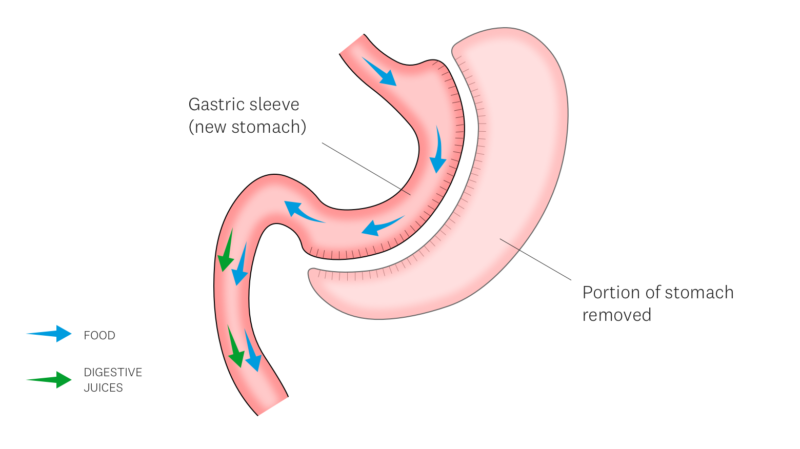Gastric Sleeve Surgery
Over the past two decades, the gastric sleeve has become the most widely performed weight loss surgery globally, making it a popular option for individuals considering bariatric interventions.
It was originally designed to be the first of 2 operations for super obese people. Patients would have a gastric sleeve, lose weight over a year, and then proceed to have a gastric bypass. However, it was observed that good weight loss could be achieved after gastric sleeve surgery only. The second operation was not required. As a consequence, the gastric sleeve became a stand alone operation.
The initial results from the gastric sleeve were variable, but over time, it has evolved to its current form where results are much better compared to the earlier years.
When is gastric sleeve surgery considered?
- as a primary operation, with a BMI>30
During your initial consultation, there may be some reasons in your medical history, which may make this operation unsuitable. If this is the case, an alternative operation will be suggested.

During gastric sleeve surgery, most of your stomach (around 80-90%) is removed, leaving a slimmer stomach pouch about the size of a half cup (100-150ml). This minimally invasive surgery, called laparoscopy, uses small incisions in your abdomen.
Having a smaller stomach due to the surgery limits the amount of food you can consume, which is why it’s classified as a “restrictive” procedure. Additionally, the removed portion of your stomach produced Ghrelin, a hormone that stimulates hunger. This reduction in ghrelin levels contributes to a decrease in appetite.
In summary, the combination of a smaller stomach capacity and lower hunger hormone levels helps you feel less hungry and eat smaller portions, ultimately leading to weight loss. On average, you can expect to lose 60-70% of your excess weight.
Benefits of gastric sleeve surgery
- Significant and sustained weight loss
- Improvement in health conditions
- No “re-plumbing” of your small bowel. The gastrointestinal tract remains in continuity
- Fewer long term complications compared to gastric bypass surgery
Specific risks of gastric sleeve surgery
- Leak at the staple line: This can happen within the first two weeks after surgery, where the stomach contents leak into the abdomen due to the staple line not healing properly. This might require additional surgery, procedures, and a longer hospital stay.
- stricture (narrowing): Weeks to months after surgery, the sleeve may develop a narrowing around the middle. This can be treated by stretching it with a balloon or placing a temporary tube (stent) for 4 weeks. In rare cases, revision surgery may be needed.
- Acid reflux: Heartburn is a possible symptom. Medicines usually manage it, but sometimes surgery might be necessary.
- Nutritional deficiencies: Despite taking multivitamins, you could still develop deficiencies in specific vitamins or minerals. Additional supplements might be needed. Lifelong follow-up and blood tests are crucial to monitor and address potential deficiencies.
- Port site pain: Pain, especially on the right side of your abdomen (due to stomach removal), may last for several weeks after surgery.
Want to continue your gastric sleeve journey?